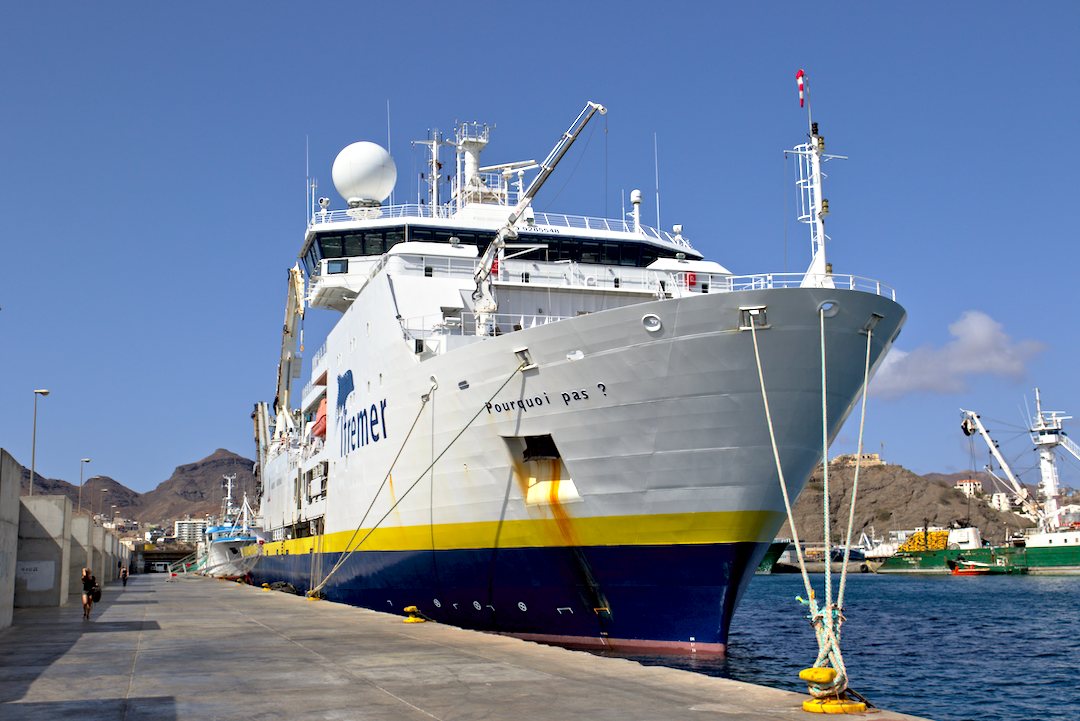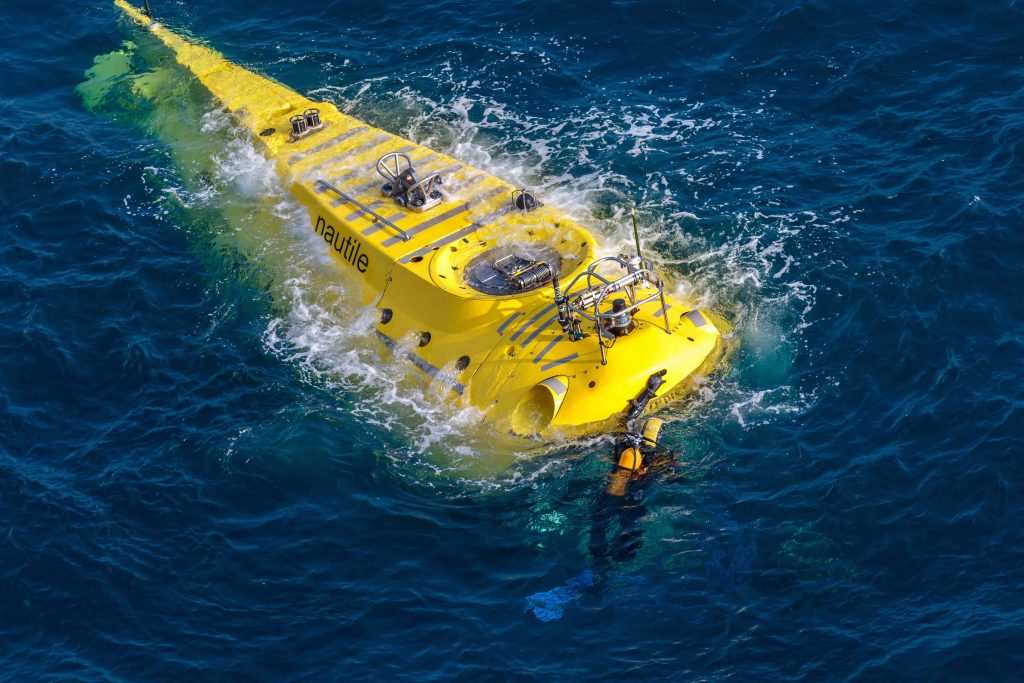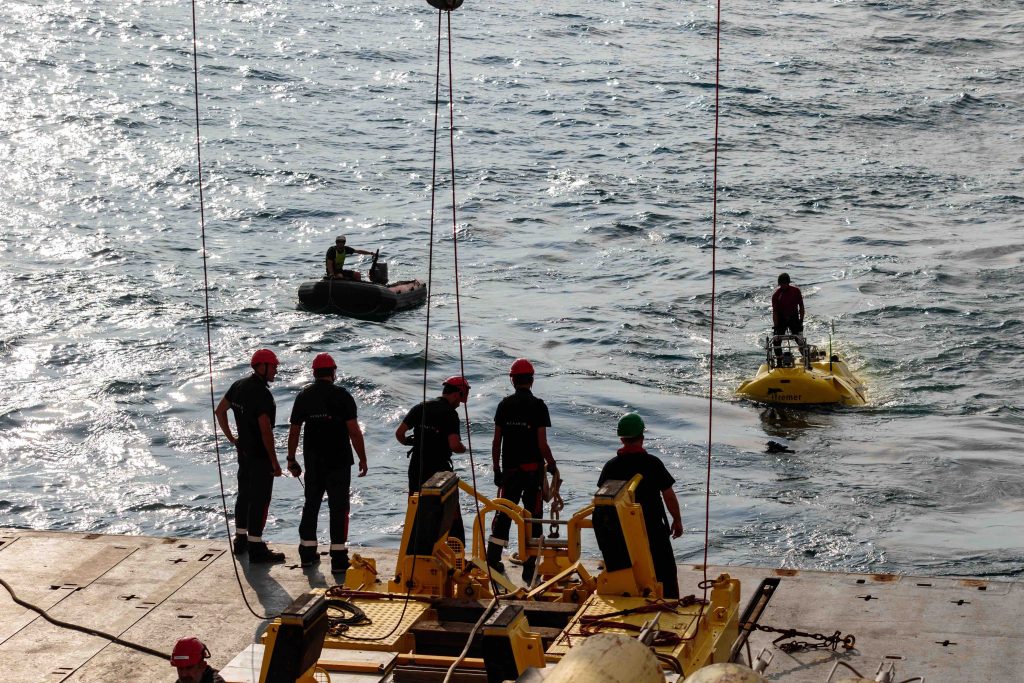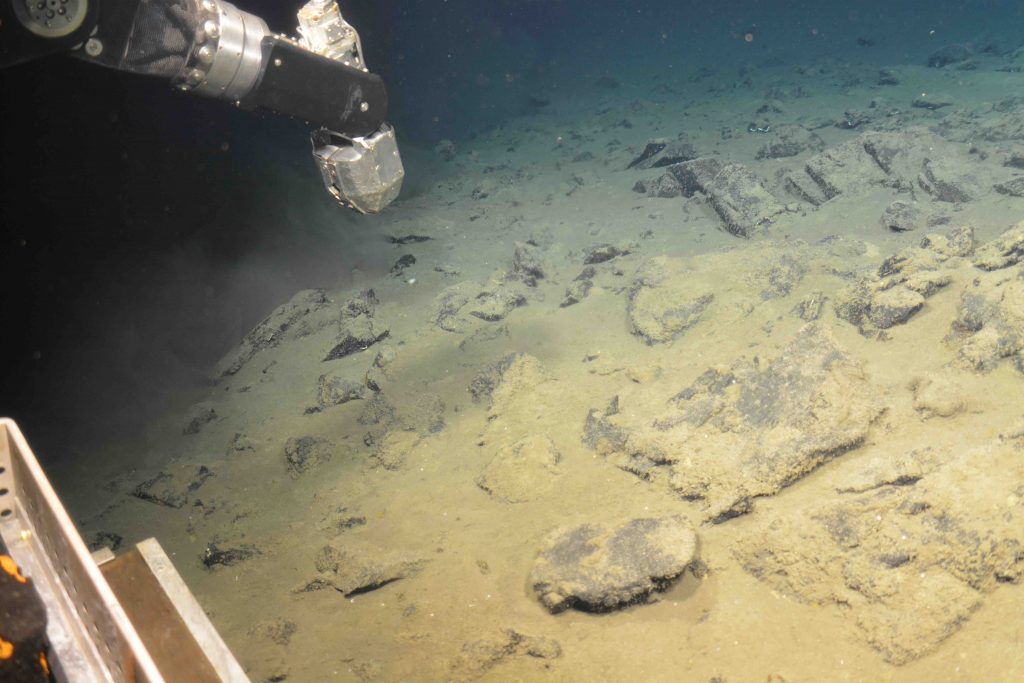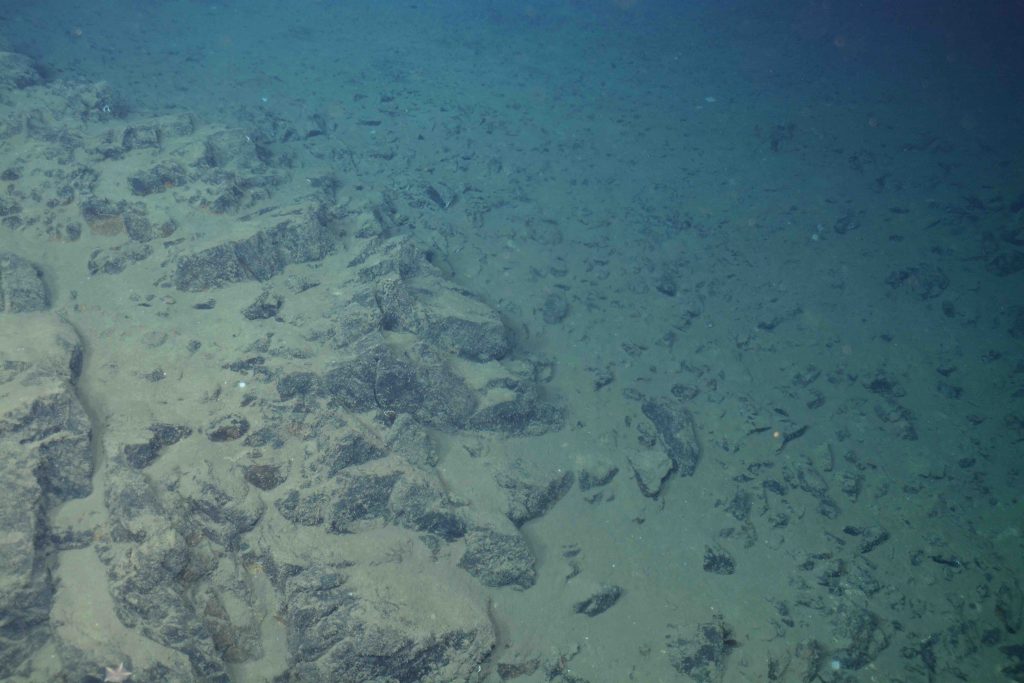On July 21st we are at the position of the first dive of the cruise. The Nautile, refit at the beginning of the year, must be qualified for great depths. We thus chose the first dive on a target allowing to start it at 6000 m depth. Then, the chosen profile chosen will go up a slope on one of the high topography domes identified on the maps. The previous days, between OBS deployments, we performed some profiles at 5 knots to obtain a better bathymetry on the dive targets. On these new maps, with a resolution between 75 and 50 meters, the starting points and the tracks of the dives are positioned. Then, based on the estimated currents, the launching point is calculated by the team in charge of the submarine, and the ship is positioned for launching.
The launching of the submarine is a precision operation, which requires experience. The crew of the “Pourquoi Pas? ” is used to perform this maneuver and everything went very well for this first dive. I is a historical dive for the submarine team composed of Xavier Placaud, pilot, Pierre-Yves Fournier, co-pilot and Marcia Maia, scientific passenger, chief scientist of the cruise.
The team was ready at 7:00 AM and inside the submarine at about 07:30. Then the cart was moved under the A-frame of the ship and left the deck at approximately 7:45 AM. The submarine was launched and started diving a few minutes later, after external checks by the scuba divers of the Nautile team. Then, a long way to the bottom.
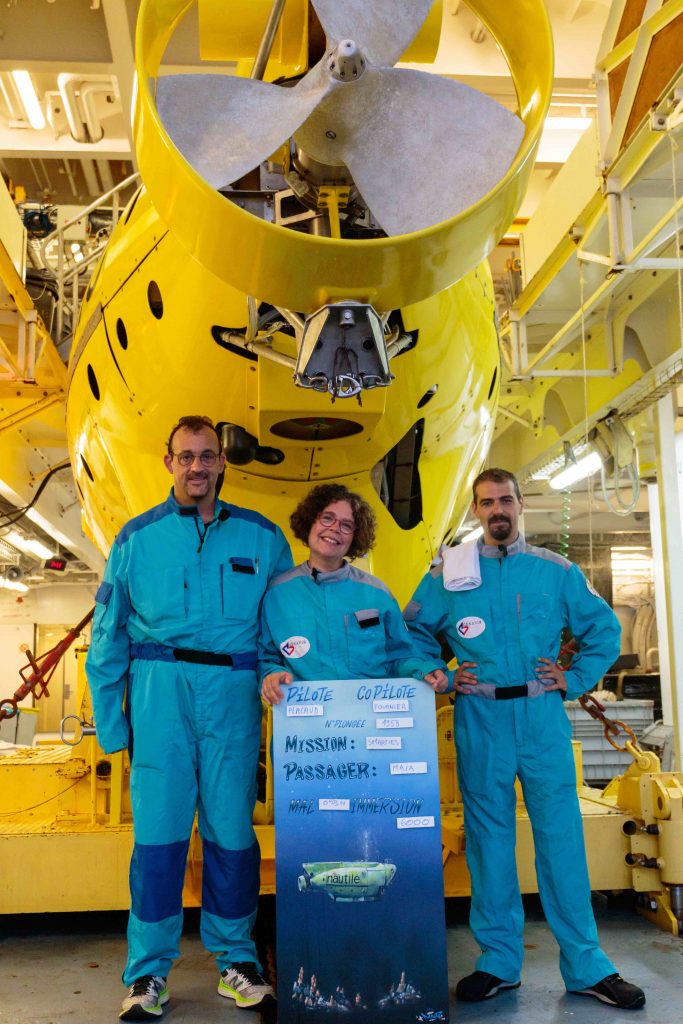
The team of the 6000 m dive Photo C. Hamelin © Ifremer 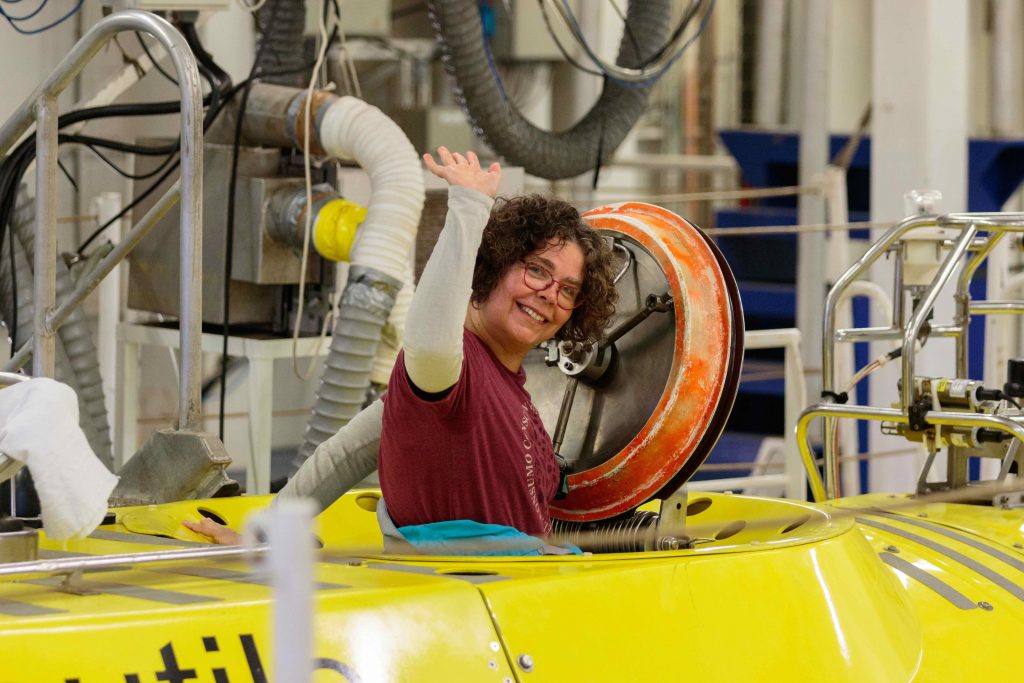
Ready for the dive. Photo C. Hamelin © Ifremer 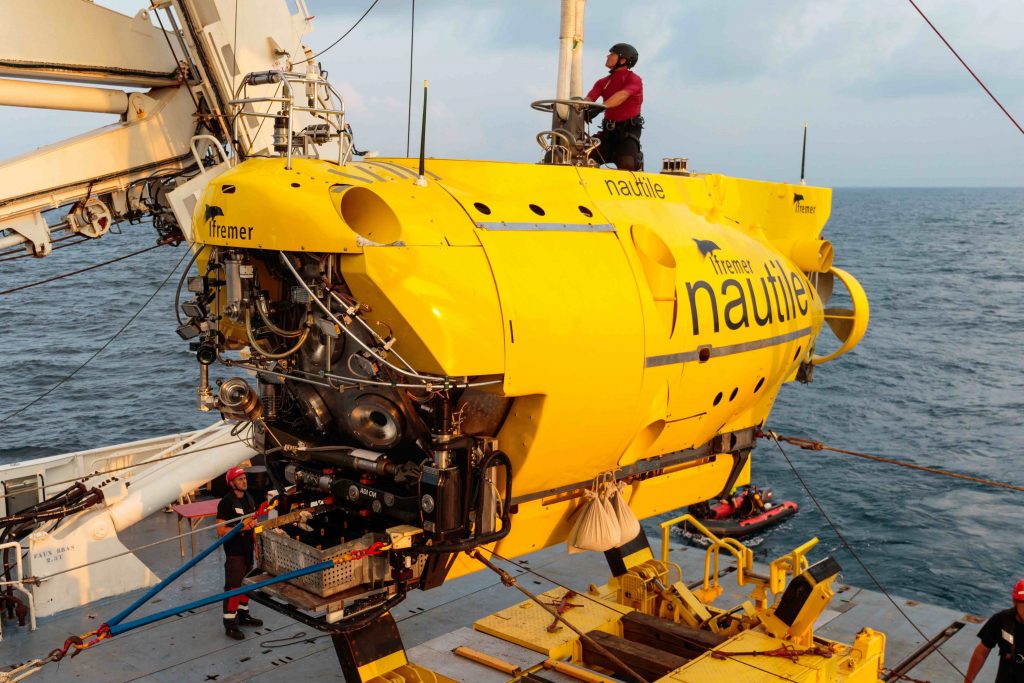
Ready for deployment Photo C. Hamelin © Ifremer
For this first dive, it took about two hours and a half to reach 6011 m of immersion. Then we headed to a place where the sea floor would be 6000 m deep to position the submersible on the seafloor and perform all the tests necessary for the qualification of the Nautile. This took about an hour, everything was OK and we were able to start our profile.
We followed a track of about 2 km in a valley which was very sedimented and composed of rock scree, sometimes with large blocks fallen from the highest part of the relief. The bottom of the valley rose gradually with some steps of about 10 to 20 m in height, where larger blocks were visible. We took the opportunity to sample blocks, sometimes without being able to break the bigger ones. Nevertheless, we managed to recover several samples of mantle rocks, which confirms the hypothesis that the reliefs are fragments of large areas of detachment, exhuming the mantle. And that this detachment is old, faulted and inactive.
After about four hours in profile, we left the ocean bottom at about 17:30. At 19:55 we were back on the ship. A return well worth celebrating for a very successful dive for the Nautile and for science.
By M. Maia
